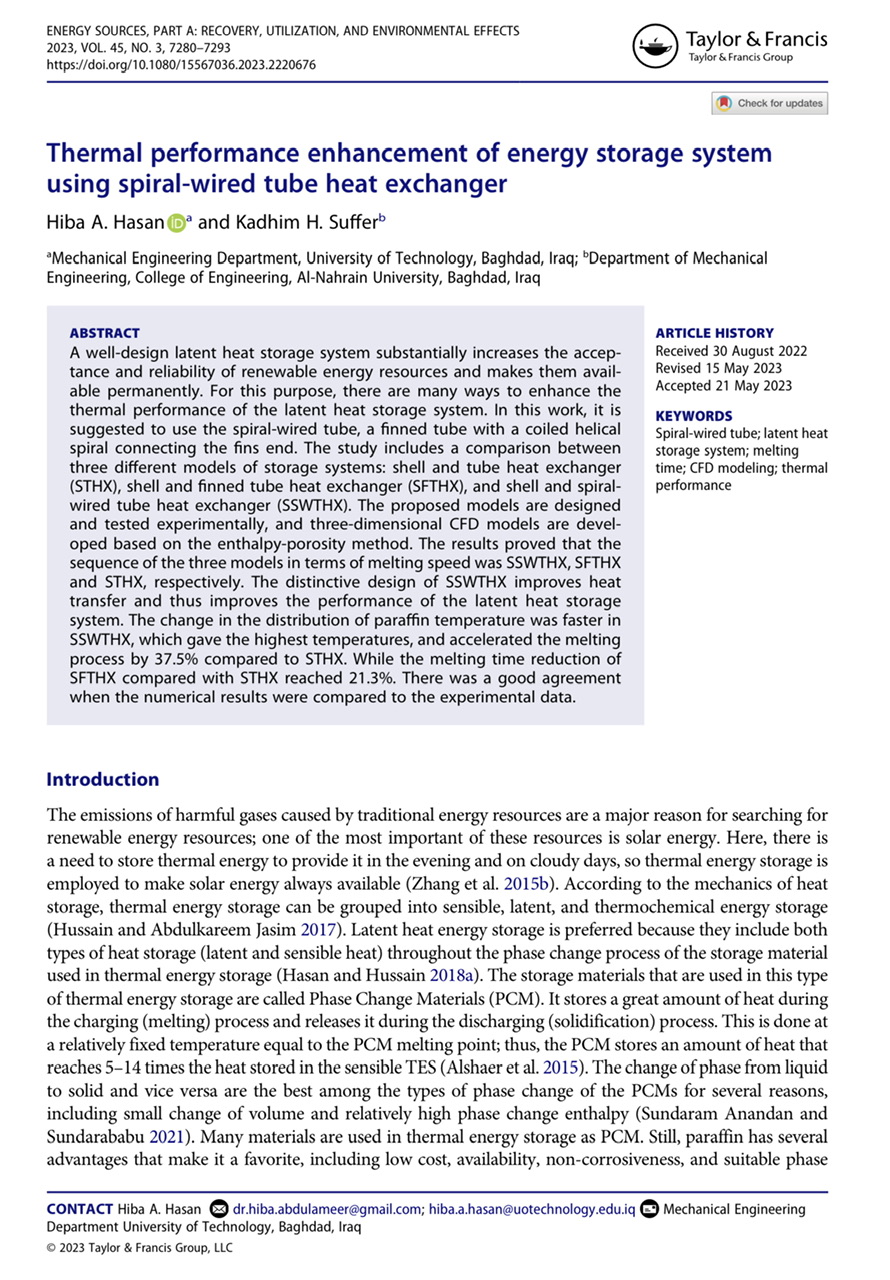Visitors: 32682993 Views
Done By: Mechanical Engineering Department
Post Date: 2023-06-10
Last Browse: 2025-12-03

Asst. Prof. Dr.kadhim h. suffer a faculty member in mechanical engineering , Al-Nahrain University published a joint scientific research paper entitled With Dr. hiba abdulameer hasan from the University of Technology in the ENERGY SOURCES, PART A: RECOVERY, UTILIZATION, AND ENVIRONMENTAL EFFECTS ، VOl. 45, No. 3 p.p 7280-7293 , which is issued by Taylor & Francis Group within the second quarter Q2 for more information click link below https://doi.org/10.1080/15567036.2023.2220676 ABSTRACT A well-design latent heat storage system substantially increases the accep- tance and reliability of renewable energy resources and makes them avail- able permanently. For this purpose, there are many ways to enhance the thermal performance of the latent heat storage system. In this work, it is suggested to use the spiral-wired tube, a finned tube with a coiled helical spiral connecting the fins end. The study includes a comparison between three different models of storage systems: shell and tube heat exchanger (STHX), shell and finned tube heat exchanger (SFTHX), and shell and spiral- wired tube heat exchanger (SSWTHX). The proposed models are designed and tested experimentally, and three-dimensional CFD models are devel- oped based on the enthalpy-porosity method. The results proved that the sequence of the three models in terms of melting speed was SSWTHX, SFTHX and STHX, respectively. The distinctive design of SSWTHX improves heat transfer and thus improves the performance of the latent heat storage system. The change in the distribution of paraffin temperature was faster in SSWTHX, which gave the highest temperatures, and accelerated the melting process by 37.5% compared to STHX. While the melting time reduction of SFTHX compared with STHX reached 21.3%. There was a good agreement when the numerical results were compared to the experimental data.Thermal performance enhancement of energy storage system using spiral-wired tube heat exchanger